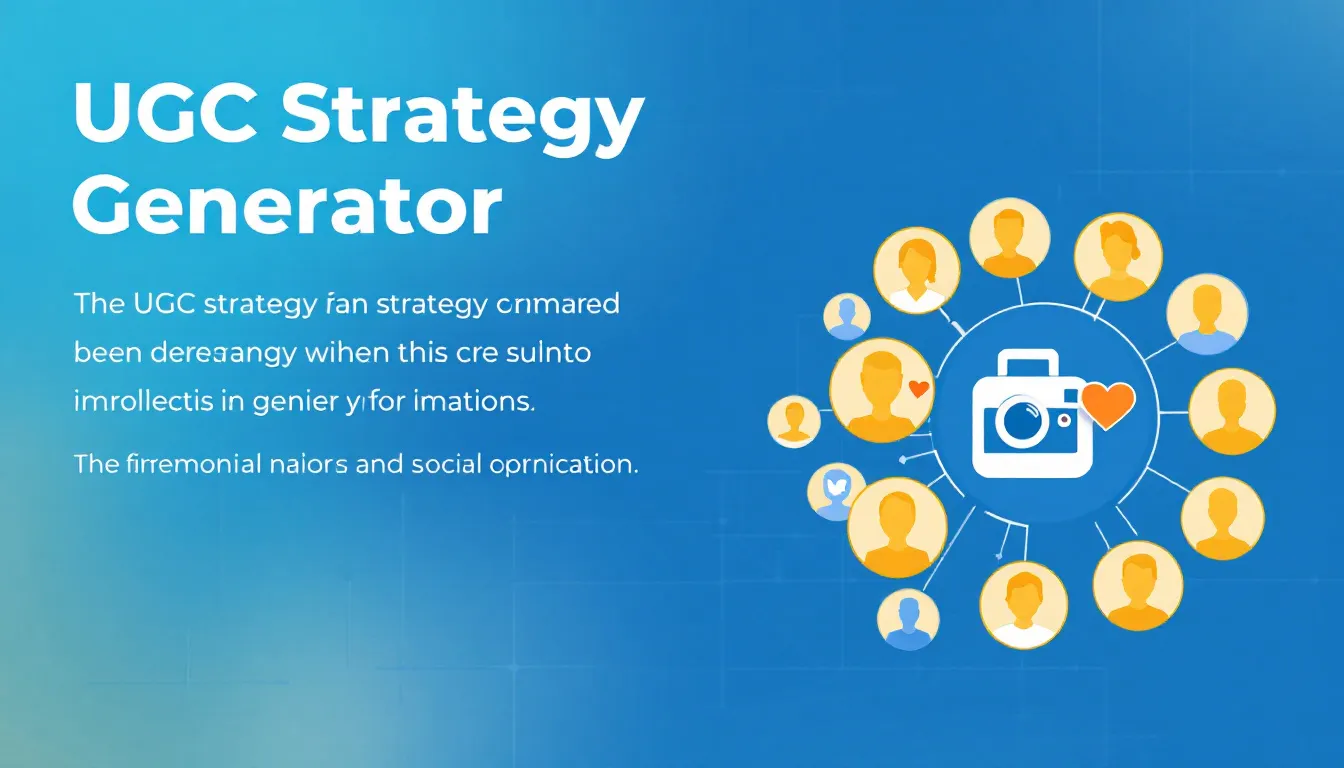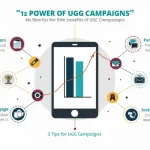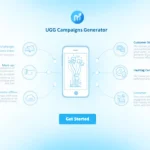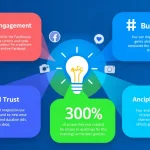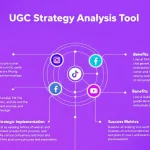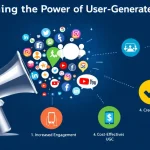Is this tool helpful?
How to Use the UGC Strategy Generator Tool Effectively
The UGC Strategy Generator Tool is designed to help businesses create effective user-generated content strategies. Here’s a detailed guide on using each field:
Field-by-Field Guide
- Business Name: Enter your company name (e.g., “Mountain Peak Outdoor Gear” or “Wellness Haven Spa”)
- Product or Service: Specify what you’re promoting (e.g., “Handcrafted hiking backpacks” or “Holistic wellness programs”)
- Challenge: Define your main issue (e.g., “Limited social proof for new product line” or “Decreasing customer trust”)
- Target Audience: Describe your ideal customers (e.g., “Adventure-seeking professionals aged 25-40” or “Health-conscious urban professionals”)
- Content Types: List desired UGC formats (e.g., “Instagram Stories and unboxing videos” or “Before/after photos and success stories”)
Understanding the UGC Strategy Generator
The UGC Strategy Generator is a sophisticated tool that analyzes your business inputs to create tailored strategies for leveraging user-generated content in your marketing efforts. It combines best practices in social proof, consumer psychology, and digital marketing to generate actionable recommendations.
Core Components
- Business context analysis
- Target audience alignment
- Content type optimization
- Challenge-specific solutions
- Implementation roadmap
Benefits of Using the UGC Strategy Generator
1. Time and Resource Optimization
Instead of spending weeks researching and planning, receive instant, customized strategies aligned with your business goals.
2. Data-Driven Recommendations
The tool’s suggestions are based on successful UGC campaigns and proven marketing principles.
3. Comprehensive Strategy Development
Receive a complete framework covering content collection, curation, and promotion strategies.
4. Scalable Solutions
Get strategies that can grow with your business and adapt to changing market conditions.
Problem-Solving Capabilities
Building Social Proof
The tool addresses common challenges in developing social proof by providing structured approaches to collecting and showcasing authentic customer experiences.
Engagement Enhancement
Strategic recommendations focus on creating two-way conversations with customers through various content formats.
Trust Building
Detailed guidelines for leveraging customer advocacy to establish and maintain brand credibility.
Practical Applications and Case Studies
Case Study 1: E-commerce Fashion Brand
A fashion retailer used the tool to address low customer engagement:
- Input: Challenge – “Low product review rates”
- Strategy Generated: Multi-channel review collection campaign
- Result: 300% increase in customer reviews within 3 months
Case Study 2: SaaS Company
A software company utilized the tool to boost brand awareness:
- Input: Challenge – “Limited brand visibility”
- Strategy Generated: Customer success story campaign
- Result: 150% increase in social media mentions
Advanced Features and Capabilities
Strategic Framework Components
- Content Collection Methods
- Engagement Metrics Analysis
- Platform-Specific Recommendations
- Implementation Timeline
- Success Measurement Guidelines
Integration Possibilities
- Social Media Campaigns
- Email Marketing Programs
- Website Content Strategy
- Customer Loyalty Programs
Frequently Asked Questions
Q: How can I encourage customers to create content?
A: The tool provides various incentivization strategies, including rewards programs, contests, and social recognition techniques tailored to your specific business and audience.
Q: What types of UGC work best for B2B companies?
A: The generator suggests case studies, testimonials, and detailed customer success stories for B2B contexts, focusing on professional value and ROI demonstration.
Q: How can I measure the success of UGC campaigns?
A: The tool includes specific metrics and KPIs for tracking engagement, conversion, and brand awareness improvements through UGC implementation.
Q: Can small businesses benefit from this tool?
A: Yes, the generator scales recommendations based on business size, providing cost-effective strategies suitable for small business resources and capabilities.
Q: How often should I update my UGC strategy?
A: The tool recommends quarterly strategy reviews with specific triggers for immediate updates based on market changes or campaign performance.
Q: What content rights should I consider for UGC?
A: The generator provides customized guidelines for content usage permissions and attribution based on your specific business context and content types.
Best Practices for Implementation
1. Content Collection Strategy
- Clear submission guidelines
- Streamlined participation process
- Effective incentive structures
- Quality control measures
2. Content Curation Process
- Selection criteria development
- Content authenticity verification
- Brand alignment assessment
- Performance potential evaluation
3. Distribution Strategy
- Platform-specific optimization
- Timing and frequency planning
- Cross-channel promotion
- Engagement monitoring systems
Maximizing Tool Effectiveness
To achieve optimal results with the UGC Strategy Generator, consider these key success factors:
- Regular strategy updates based on performance data
- Consistent implementation of recommended tactics
- Active community engagement and management
- Continuous monitoring and optimization
- Integration with existing marketing initiatives
Important Disclaimer
The calculations, results, and content provided by our tools are not guaranteed to be accurate, complete, or reliable. Users are responsible for verifying and interpreting the results. Our content and tools may contain errors, biases, or inconsistencies. We reserve the right to save inputs and outputs from our tools for the purposes of error debugging, bias identification, and performance improvement. External companies providing AI models used in our tools may also save and process data in accordance with their own policies. By using our tools, you consent to this data collection and processing. We reserve the right to limit the usage of our tools based on current usability factors. By using our tools, you acknowledge that you have read, understood, and agreed to this disclaimer. You accept the inherent risks and limitations associated with the use of our tools and services.
